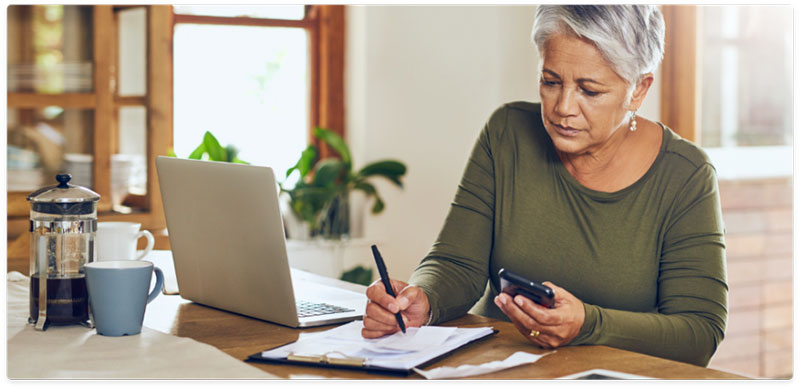Why Should I Care About Canada's Pension Plan (CPP)?
Nov 16, 2023 By Triston Martin
The government provides retirement and disability payments in Canada at three different tiers, the lowest of which is the Canada Pension Plan. In 1965, the federal government of Canada established the Canada Pension Plan to provide retirees and disabled contributors with a minimum level of benefits. All benefits under the plan are paid to the beneficiary's heirs upon death.
Getting To Know Your Canada Pension Plan

The Canada Pension Plan (CPP) is a national retirement savings program to which nearly all Canadian workers are entitled to contribute and from which they may ultimately receive benefits.
Since its inception in 1965 as a supplement to Old Age Security, the Canada Pension Plan (CPP) has provided retirees with a reliable source of deferred income. The full retirement age is 65, and those who have reached that age are eligible for the standard benefits.
Taxes

The CPP taxes earnings in a manner shared between the employer and the employee, but with the net effect of reducing employee pay by the total taxable amount in all provinces except Quebec, which has its own Quebec Pension Plan (QPP).
Even if a worker is already receiving benefits, they must start paying taxes on their salary at age 18. This remains true until they reach age 69. In comparison to the United States Social Security system, Canada's CPP has lower tax rates and lower income requirements, and its payouts are thus generally smaller.
The CPP Investment Board invests the trust fund, which contains Canadian income tax contributions, in various securities. The portfolio was diversified with investments in both public and private equity, as well as real estate.
The CPP Application Process
The only way to obtain your CPP payments (even if you are eligible for them) is to fill up and submit an application. If your application for a Canadian pension is turned down, you have the right to appeal the decision to the Canada Pension Appeals Board.
Due to the provincial government's decision to opt-out of the CPP, Canadian citizens who happen to be residents in Quebec are ineligible for CPP payments. However, the Quebec Pension Plan is available to residents of Quebec.
A Canadian citizen's SIN and banking details will be required to complete an application. If you and your husband or common-law partner are eligible for pension sharing, you'll need your Social Security numbers. If you want to take advantage of the child-rearing clause, you'll also need to include your kids' Social Security numbers and birth certificates.
Changing the CPP
Working Canadians now have access to a larger retirement nest egg thanks to efforts by the federal and provincial governments to strengthen the Canada Pension Plan. The primary driver of these adjustments was the reduction from 54% of males covered by an employer-defined-benefit pension plan in 1976 to 37% in 2011.
The provincial government of Ontario offered more impetus by announcing the Ontario Retirement Pension Plan, a supplemental provincial pension plan set to commence in 2018; however, the plan was ultimately supplanted by the CPP and never went into force.
These improvements to the Canada Pension Plan will be fully financed, which means that as people work and make payments, they will gradually earn benefits over time.
Comparing the Canada Pension Plan with Social Security
Even though the CPP is sometimes compared to the U.S. Social Security program, it is important to note that there are significant distinctions. Most notably, although Americans fret over Social Security's long-term solvency, Canadians aren't worried about the solvency of the Canada Pension Plan (CPP). 2526
Although Social Security benefits are often substantially higher than CPP, it is crucial to realize that senior healthcare in the United States may be quite costly.
In addition, the taxes you pay into the two systems are distinct from one another. Canadian workers contribute 5.7% of their income to Social Security, compared to the 6.2% paid by Americans. If you're self-employed in either nation, you'll need to cover your share and the employers. 17
How Much Time Does It Take to Get CPP Disability Benefits Approved?
The approval process for a CPP Disability claim typically takes around 120 days. However, if the situation is dire, the agency will strive to decide within 30 days; if the applicant is terminally ill, the timeline is shortened to five working days.

18-Hour Cities Explained: Significance, Working, and Examples

Why Should I Care About Canada's Pension Plan (CPP)?

Credit Card Tips For Beginners

A Guide on What Is a Credit Freeze and All that You Should Know About It

Rewards From Dividend Reinvestment Programs

What is Self-Employment Tax?

An Insider’s Guide to 12B-1 Plan: Purpose and Structure

The High Cost of Chasing the 'Insta Life': How Social Media Can Impact Your Finances

The Mechanics of Interest Bearing Accounts: How They Pay You for Your Money
